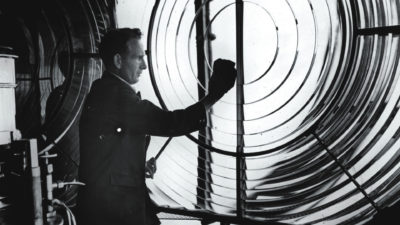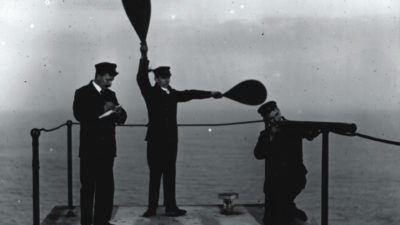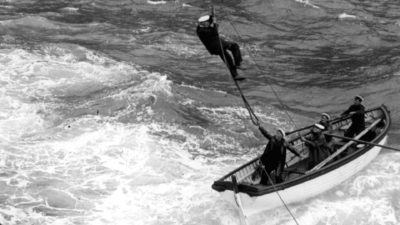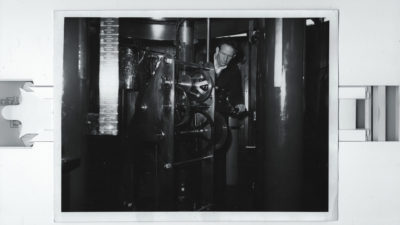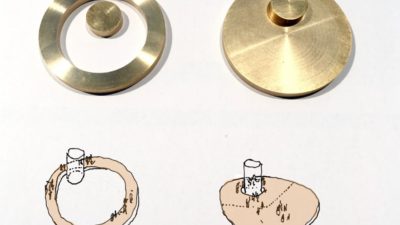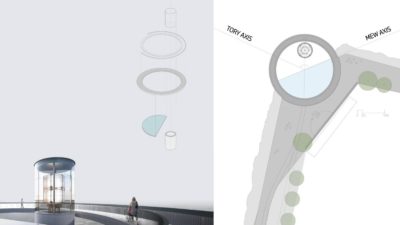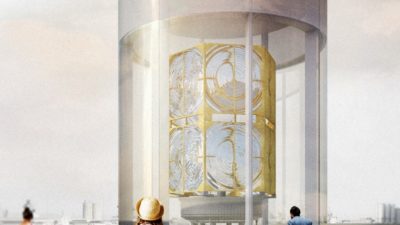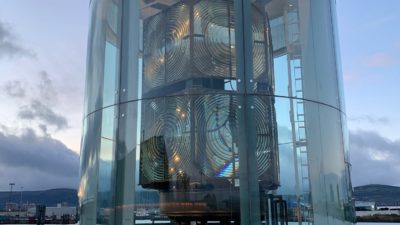The Great Light – unravelling its past
One of Maritime Belfast Trust's trustees, Dr Sally Montgomery OBE, shares the fascinating story behind researching the Great Light.
It all started with a letter
This blog is an account of how I unravelled the story of the Great Light. While it may read sequentially it was messier than that, which is hard to write. Needless to say, you are constantly chasing threads of information – some are blind ends and others lead you on an amazing journey, helped by great people.
It all started with a letter. The letter was written to Titanic Belfast, the world’s leading tourist attraction, by Irish Lights early in 2015. It was passed to Maritime Belfast Trust, the charity committed to preserving Belfast’s maritime and industrial heritage. Irish Lights had removed Mew Island Lighthouse’s optic from its tower in 2014. As part of the plan to remove the optic and replace it with a modern LED light, Irish Lights were seeking a new home so that it could be preserved. However, when the lighthouse optic is seven metres tall and weighed ten tonnes, the options were very limited. The letter stated that it was a First Order Dioptric Lens.
Were we interested? The Board of Maritime Belfast agreed we should look into this further and I was asked to research and write a short report on the history and heritage value of the Optic. The letter started three years of research, fundraising and construction by Maritime Belfast to secure what turned out to be a very important historic maritime object.
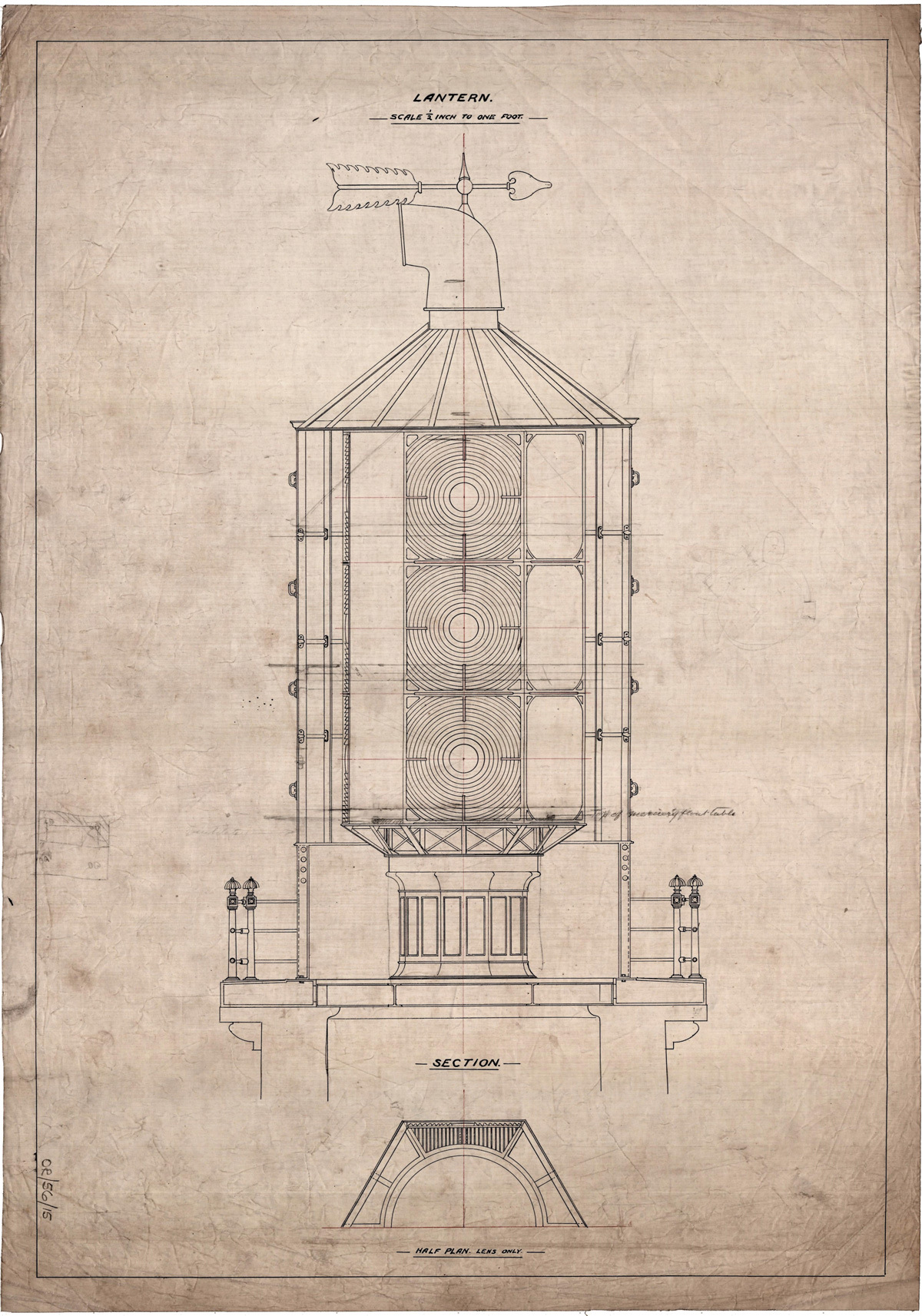
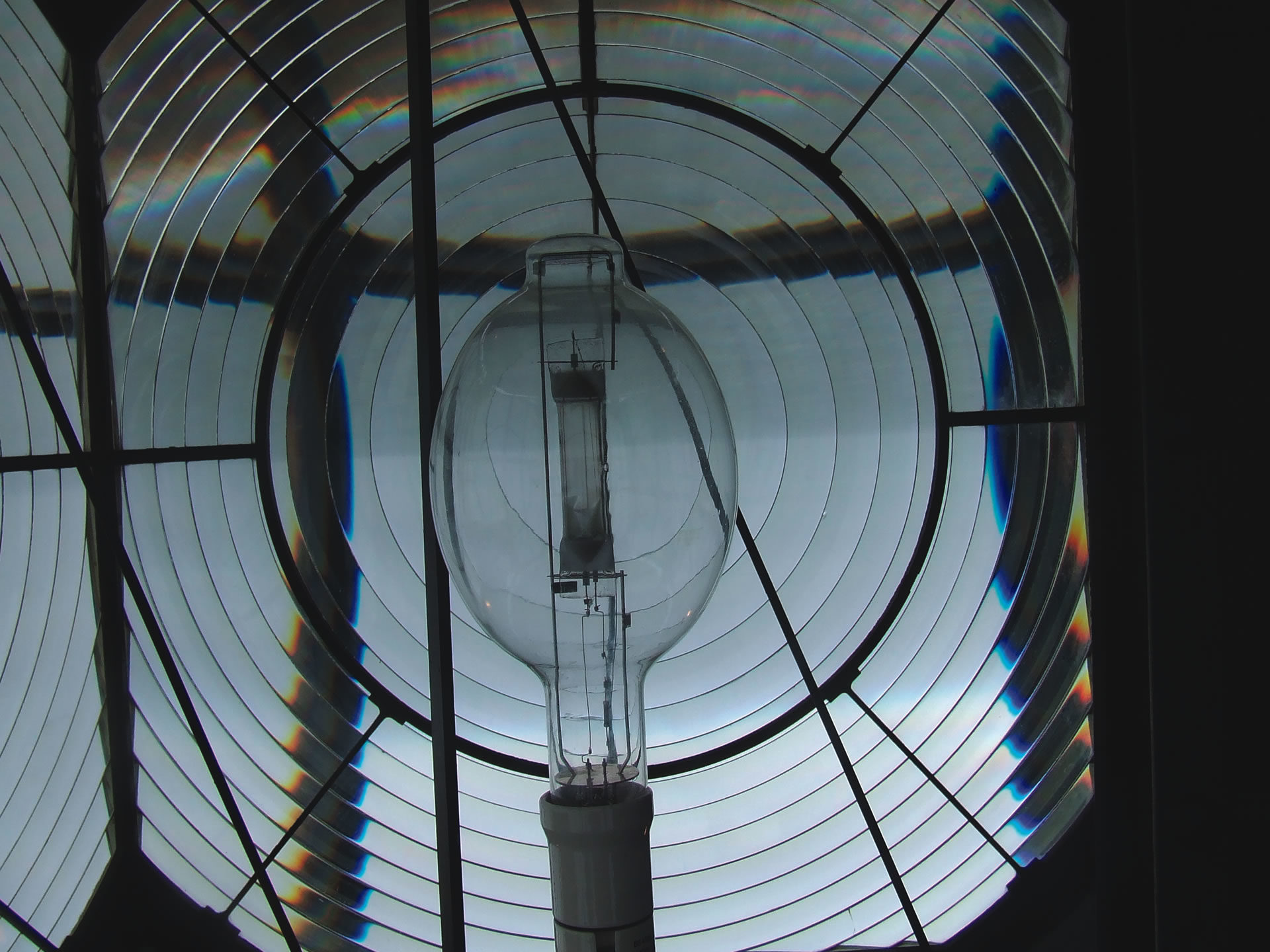
Paris, 1884
The first thing you learn when you research lighthouses is that more is written about the construction of the lighthouse than the technical aspects of producing the beam of light. I knew, or thought I knew, that the optic included 8 First Order lenses, and the metal frame was stamped with the manufacturer’s names and date; Barbier and Fenestre 1887.
I started with the history of Mew Island lighthouse which had been documented by Reggie Hamilton, one of the former Keepers, in 1984 for the lighthouse’s centenary. Like many lighthouse keepers he followed in his father’s footsteps, which meant that the account covered a significant amount of time and therefore information. He recounted that the original lens in 1884 was 30ft in height and had a focal length of 36inches which is 92cms. The optic was manufactured in Paris by Messrs Barbier and Fenestre and supplied by Messrs Edmundson & Co of Dublin. Edmundson’s also supplied the lantern; gas works and fog signal plant. The person behind Edmundson’s was John Richardson Wigham. The Grace’s Guide of leading engineers gave an excellent account, along with other articles, of this young determined engineer.
There was extensive coverage of the lighthouse being lit in 1884, explaining in detail the success of John Richardson Wigham’s gas burners. It was fascinating to read the almost identical reports in each newspaper, indicating this Wigham had probably issued some kind of technical press release that the reporters were relying on.
Reggie went on to say ‘In 1928………The complete lantern from the top of the original murette was rebuilt and a first order hexagonal biform dioptric Fresnel lens of 2660mm diameter installed. This lens was composed of eight panels of the lens manufactured in 1887 by F. Barbier & CTE, Constructeurs, Paris and used with the coal gas light on Tory Island. Chance Brothers of, Smethwick, near Birmingham built these magnificent panels into a new optic unit using two steel plates in each tier to provide blank panels thus providing a group four flashing character. The lens revolves in a mercury trough floating just clear of ball bearing brass rollers. At the same time an exactly similar lens was reconstructed for Tory Island.’
Hyper radial optics
My next clue came from the thorough research carried about by Thomas Tag, the technical advisor for the US Lighthouse Society. Tory Island and Mew Island were listed as having Hyper Radial optics. Hyper Radial optics contained the largest lenses installed in lighthouses with a focal length of 1330mm compared to 920mm for 1st Order lenses. His own research has led to the creation of a fantastic resource on all the technical aspects of lighthouses.
This was confusing. Was the original optic on Mew Island a Hyper Radial – yet Reggie Hamilton had stated it had a focal length of 910mm, which is the focal length of a First Order Lens.
Thanks to the careful archiving of drawings by Irish Lights we could confirm that the original optic was triform (three tiers) First Order optic with six lenses per tier and was made in 1884, by Barbier and Fenestre in Paris. Looking at Tory Island lighthouse drawings confirmed that the original optic was triform (three tiers) Hyper-Radial optic with six lenses per tier and was made in 1887, by Barbier and Fenestre in Paris. As my research continued, I discovered that this in fact was the very first Hyper Radial optic made in the world! But how did its frame end up in Mew Island?
What followed was in depth research understanding the history of lenses from Fresnel onwards. This was followed by understanding how light house optics were lit – and the importance of coal gas in Ireland and the rivalry between the Stevenson in Scotland, Nicholson working for Trinity House and the role of John Tyndall. All of this was researched through the internet and continuous word searches to find the right documents. I also visited Tory Island and interviewed the former Keeper Sean Doherty. He helped me understand how the light worked, being rotated at night, curtains drawn during the day etc. My practical knowledge was further advanced by the discussions with other former Keepers, most notably Bill Power who had served on Mew Island for some 14 years.
Ireland was unusual in that they used coal gas as a fuel for its major lighthouses. This was because Irish Lights had asked John Richardson Wigham, based in Dublin, to improve the quality of light in Irish lighthouses. He invented a massive gas burner with 108 gas jets. It was so hot (and bright) that it was cracking first order lenses. The solution was of course to make a bigger lens, which was also observed by the famous Scottish lighthouse engineer, Thomas Stevenson. Wigham turned to the leading manufacturer of Fresnel lenses at the time, Barbier and Fenestre, for the design. Wigham’s plan was to put it into Mew Island lighthouse. However, the Board of Trade felt it was unproven and he had to reluctantly use a 1st Order optic.
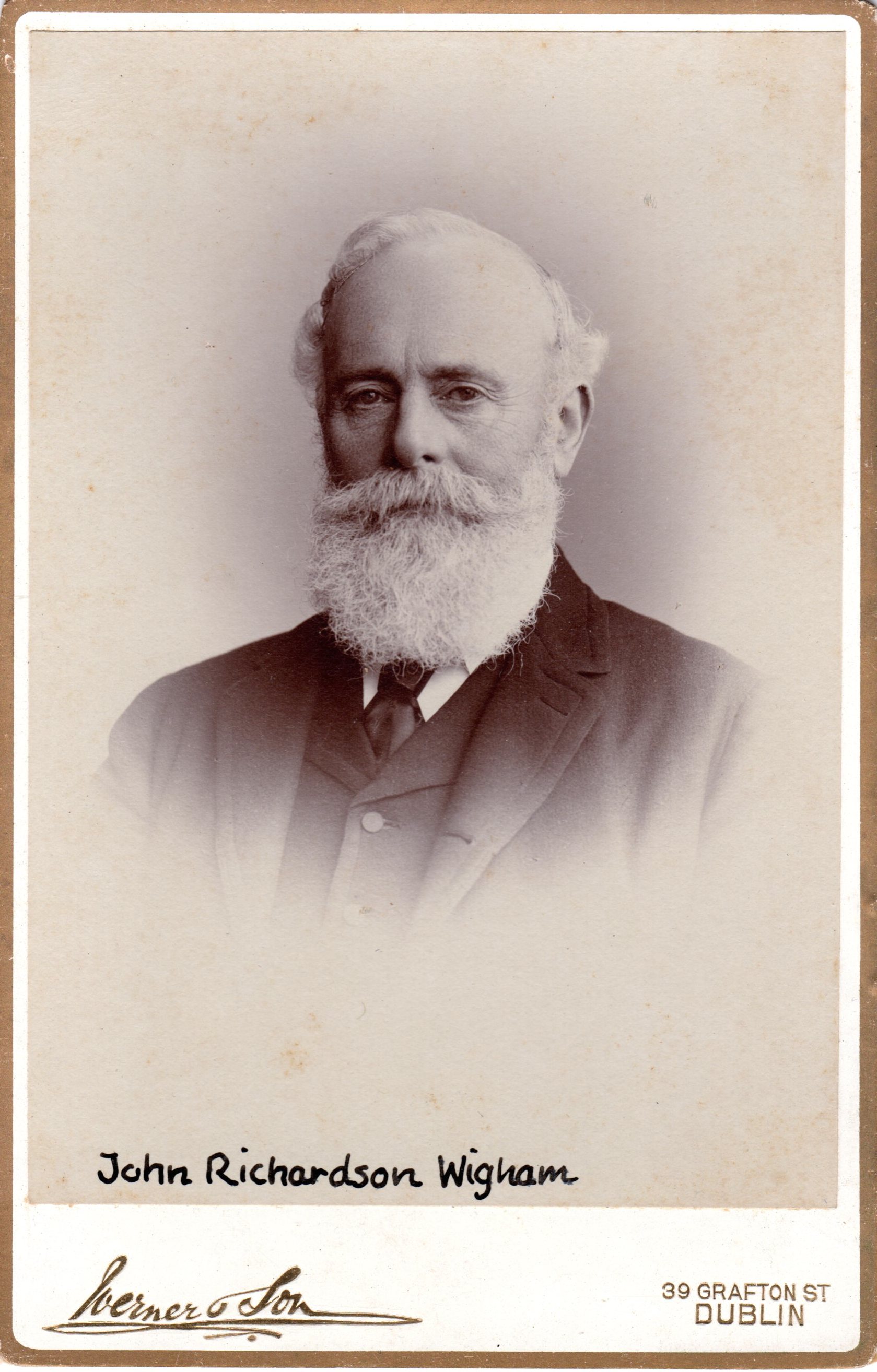
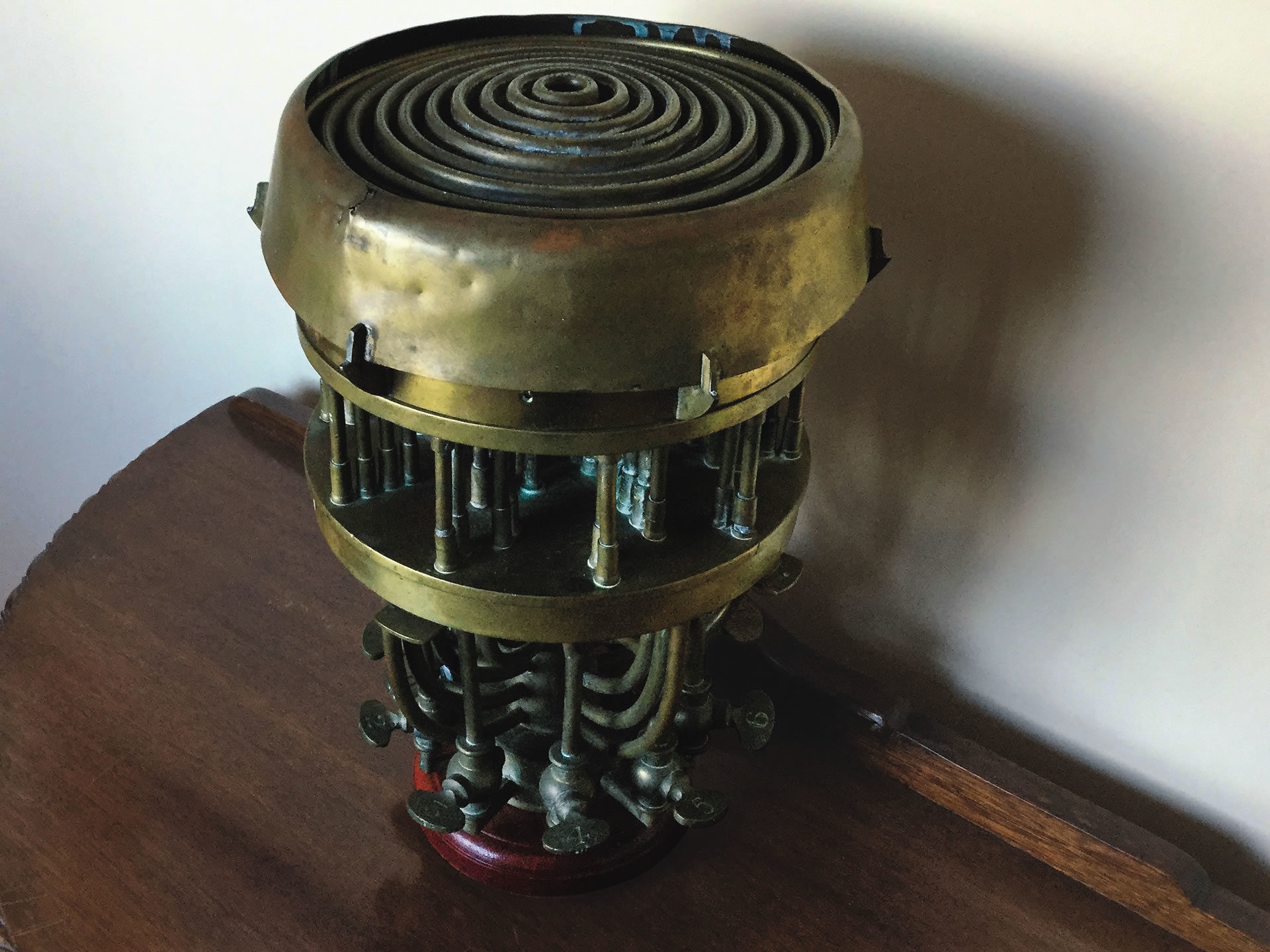
Lighthouse Trials 1884
The lighthouse trials of South Foreland in 1884 were the turning point. The Hyper Radials were proved to give a ‘great light’ when used with a gas burner. The only place that I found that gave some insight into these trails was in newspaper reports at the time, using the National Newspaper archive.
The archives also produced vivid accounts of the Tory Island light being first lit on Saturday 1st October 1887, when John Richardson Wigham finally got approval for using a Hyper-radial optic. This was the very first Hyper-Radial optic made and lit. Two months later the Chance Brother’s Hyper-Radial for Bishop’s Rock lighthouse was lit.
I now knew that Mew Island’s optic was First Class made in 1884 and Tory Island’s was a Hyper Radial made in 1887. So, what happened in the 1920’s that required a new light to be made for Mew Island?
Irish Lights have an extensive archive based in the Baily lighthouse, Howth. Not only have they Board minutes but also Engineers reports. These documents are carbon copies of the originals. I was assisted by Frank Pelly and his knowledge of the archives. We looked at reports for 1927/8 – and there were references to the extensive work that took place to rebuild the lantern room as described by Reggie Hamilton. There was nothing about it being ordered. Without better dates it would take ages to find.
Chance Brothers Archive
The next place to look was to try and trace whether there was a Chance Brothers Archive. There was an indication that the archive was held in Smethwick Library. I contacted the staff, but they could not find any reference to Mew or Tory Island Lighthouse. However, I was carrying out an internet search and came across Toby Chance, a relative who had written and published a book on the Chance Bothers. This excellent book gave great background to this important company. I also found an email address and sent an email into the ether, hoping he might know of the archive. I waited, and he replied, giving me the names of some people involved in digitising the archive. They too replied and informed me that MADE (Midlands Architecture and the Designed Environment), were digitising the order books of the Chance Brothers, however they had only just started. Patience. In October I enquired. Nothing yet.
In the meantime, Barry Phelan in Irish Lights found the original design drawings and they were dated 1926 & 27. However, Tory Island’s drawings were dated 1921.
This gave us a clue. I had to look much earlier. Back to Baily, and in 1920 there was a reference in the Engineers report that Mew Island’s light was becoming irregular. For an Aid to Navigation this is serious – the light had to flash according to the characteristics, so mariners knew where they were.
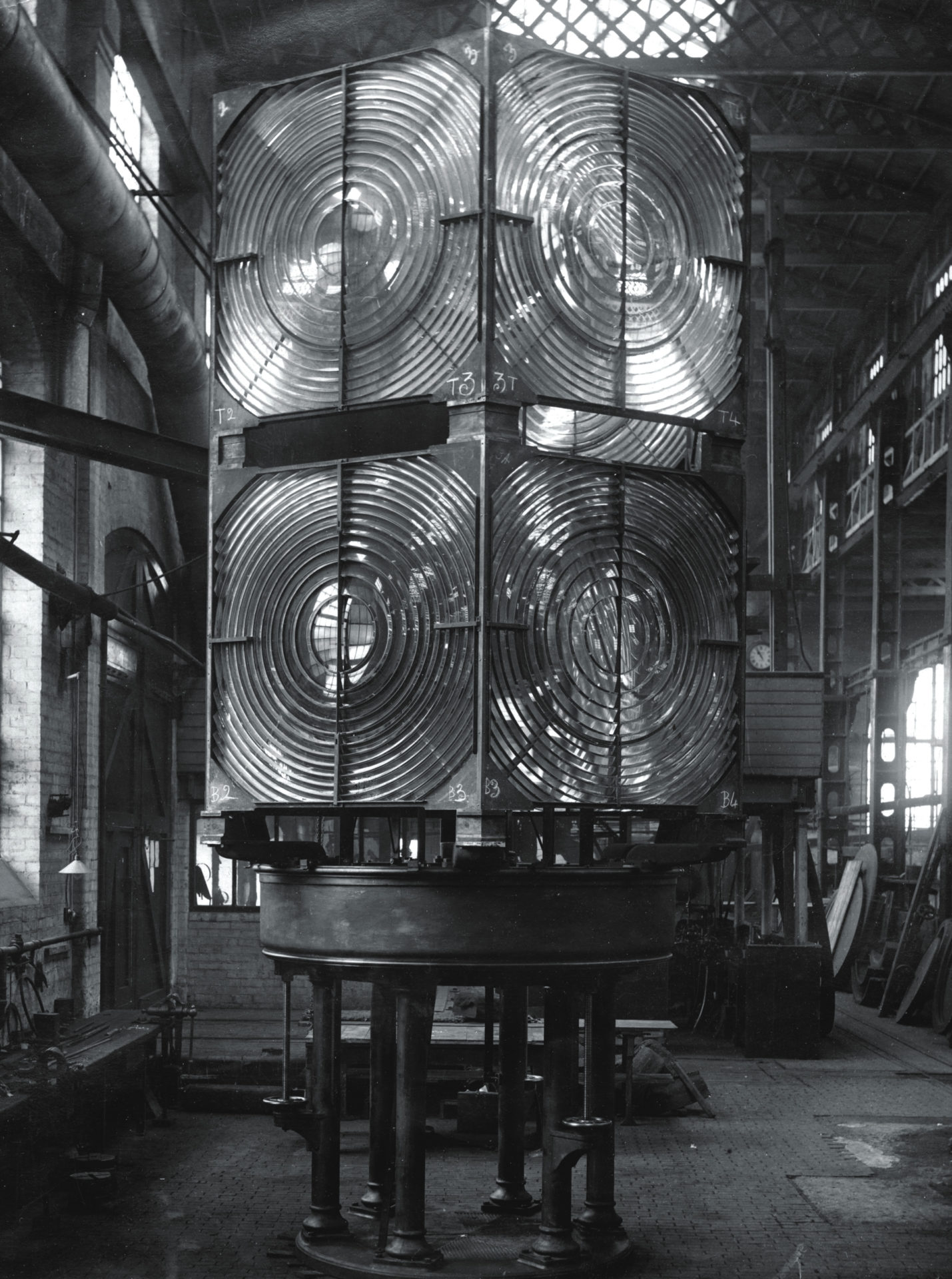
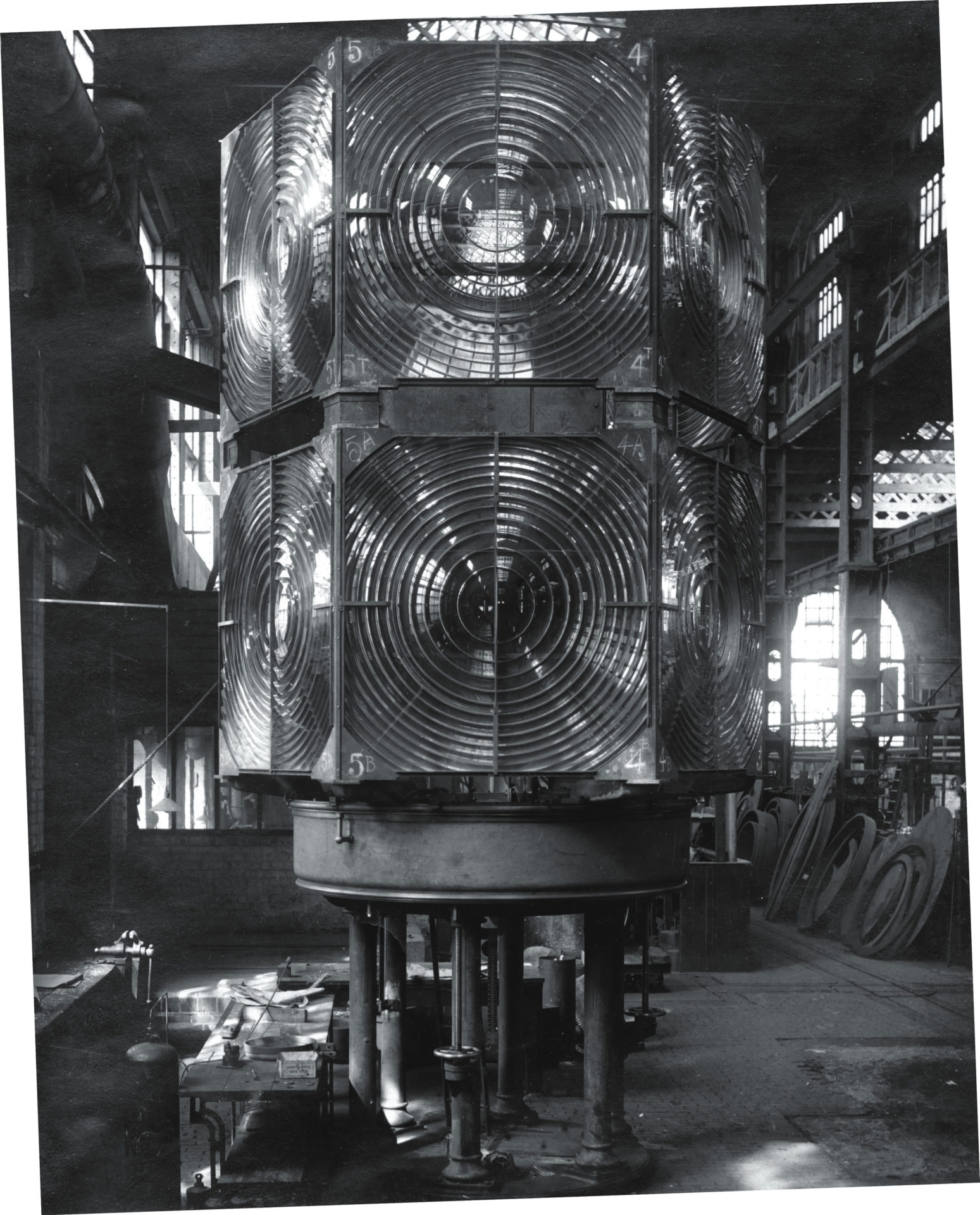
One optic into two
After Christmas I contracted a bug that left me in bed, feeling miserable with an iPad for company. On the 30th December I received an email from Nita Newman to say that they had digitised the 1928 order book and attaching a copy. Wonderful – but no reference to Mew Island. I did learn that the order book was organised by client – so the correct reference to look for was ‘Irish Lights’. I asked Nita if I could have some earlier books – 1927 & 1926 followed – but I found nothing. The 1925 book referenced the order for some mercury for the mercury Bath for Mew’s optic. Finally, 26th August 1924 revealed the order for an optic for Mew Island: the work to be carried out exactly as was done in the case for Tory Ireland and the lenses were being shipped to them. So, when was Tory Island ordered? Back further to February 1922 and here was the order for unpacking and remaking an optic and mercury pedestal for Tory Island re-using the lenses from the original tri-form Hyper radial optic.
Now we knew which had happened first – Tory in 1922, followed by Mew in 1924. Both were made from the Hyper radial lenses and frames of the 1887 Tory Island optic. The original 18 lenses had produced two optics with 8 lenses each, together with a new mercury bath so that the optic would turn. The order books gave us another tantalising piece of evidence which Barry Phelan interpreted for me. The Tory lenses were raised with brackets, and Mew Island’s brackets were omitted. Now we could look at the historic photographs taken by Chance Brothers at the time and identify the two optics individually. Reggie Hamilton was correct in that the focal length was 1330mm which is the focal length of a Hyper-Radial, but he did not know to call it that, so he said it was a First Order Lens.
Notice to Mariners
A second visit to Irish Lights archives, armed with the correct dates made it easier to find the Engineer’s report and the conformation of the Board of Trade expenditure on the conversion.
Everything had now fallen into place, except for the crucial detail about when the new Optic was lit. I had previously searched the newspaper archives but had found no reference when Mew Island’s new paraffin light was activated. Frank Pelly informed me that while the work was carried out, they would put up temporary lights on the tower, and inform mariners. How did they inform mariners? Through a printed ‘Notice to Mariners’.
I looked at Frank and asked whether there would be such a Notice for Mew Island? He shook his head. I started to pack away my notebook etc. He then dashed off, coming back with a book in his hand. There on the very first page was the Notice to Mariners updating the notice informing them of the use of temporary lights on Mew Island Lighthouse from the 2nd July 1928 would be suspended on 1st September 1928. This is when the new light would be lit. Finally, we had the sequence of events from 1884 through to 1928.
As I traced the optic’s past, the importance of the optic became more and more significant, not just for Belfast but for the world. Thanks to the work of Thomas Tag, we think only 30 optics were made, just 20 Hyper Radial optics are left, and very few are on public display, such as Rua Reidh lighthouse optic in Gairloch Museum, Scotland. Mew Island’s optic was not only part of the very first one made, it is the only one of two made in this design and was now irreplaceable. The optic could tell the story of the changing technology from gas, to paraffin to electricity and the story of the lighthouse keepers who tended and cared for the light over many years until 1996 when the light was automated. We were helped by many former Keepers who explained their role and the stories while serving.
The Great Light
While I was researching the history, the team in Maritime Belfast were busy securing funding from Heritage Lottery Fund, Belfast City Council’s Local Investment Fund and Ulster Garden Villages to display the optic in the public realm in Titanic Quarter. We ran a architectural design competition to house this massive optic and christened it the ‘Great Light’ as it produced one of the strongest lighthouse beams ever seen. The winning design provided a custom built glass enclosure for the historic optic.
The site was agreed with Belfast Harbour Commissioners and Titanic Quarter so the optic would sit beside the water and along a new 500 metre Titanic Walkway on Victoria Wharf, which connects the Titanic Slipways to HMS Caroline and the Thompson Dock. Irish Lights restored the optic and transported it to its new home. We watched nervously as it was craned in to the enclosure and reassembled. Finally, after three years, we opened it to the public on the 8th March 2018. Now this wonderful GREAT LIGHT can be enjoyed by thousands of visitors.
My thanks to Barry Phelan and Frank Pelly from Irish Lights, Thomas Tag from the US Lighthouse Society, Nita Newman from MADE (Midlands Architecture and the Designed Environment), Bill and Pat Power, Sean Doherty and all the former Lighthouse Keepers who brought my theoretical knowledge to life.
Dr Sally Montgomery OBE


